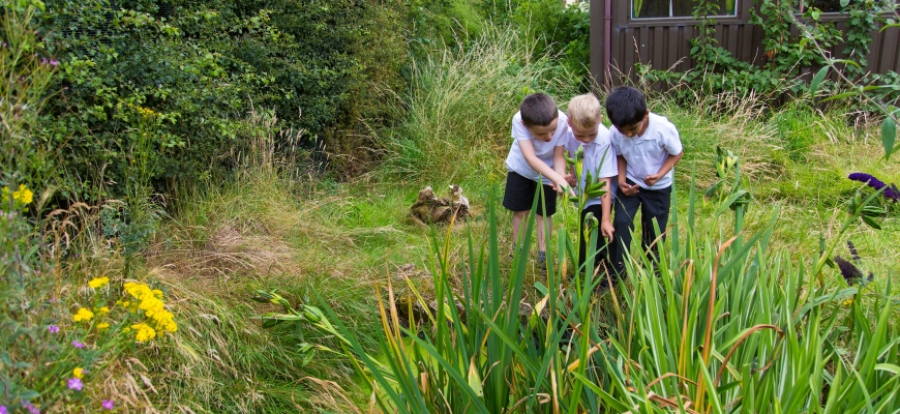"In England there have been no initiatives implemented to encourage outdoor learning before the age of 16."
A study carried out by the Scottish National Heritage found that outdoor learning is supported by teachers as they see it as a way of extending and improving the opportunities on offer during a lesson. The outdoors is a stimuli and it helps to engage the student within the learning environment. This makes it possible for teachers to use new methods of teaching.
During the 2010-11 school year, the Curriculum for Excellence was introduced in Scotland, and the aim was to aid students in becoming successful learners, as well as more confident and responsible. Outdoor learning formed part of the Curriculum for Excellence, and since it was introduced many schools have taken up the opportunity to take lessons outdoors. However, throughout England, the number of lessons that take place outside of the classroom has been low in comparison.
This has resulted in outdoor learning being inconsistent across the UK and this is partially down to the fact that there is a divide between Scotland and England. In England there have been no initiatives implemented to encourage outdoor learning before the age of 16. The uneven spread of outdoor teaching is also down to the fact that Scotland faces challenges surrounding the provisions in place for those schools in deprived areas. However, moving the lesson outdoors is challenging for a number of reasons. It needs to gain the support of teachers and parents as well as school governors, not to mention the additional funding and training required.
Learning outdoors offers children new surroundings that stimulate their minds and it also makes it possible for teachers to take on new methods that are more active and collaborative
Regardless of the challenges faced, the rewards are high. Research carried out proves that there are many benefits that come with learning outdoors. The teaching environment is more relaxed, and this helps students engage and be at ease with subjects that they find challenging. There are new ways of stimulating the mind and senses and this helps the learning process while giving pupils the feeling of freedom. Subjects such as Science, Geography and Art can take on a whole new dimension when lessons take place outside.
With these benefits in mind, the potential of outdoor learning and what it can offer should not be dismissed when it comes to school. Outdoor learning is in fact a crucial tool when it comes to teaching methods, and it should be viewed as an approach to teaching rather than an extra activity. The future of outdoor teaching is interesting as it looks as though it is going to continue to grow for many years to come - even more so if the education system in England adopts the attitude to outdoor teaching that Scotland currently has.
Schools can embrace outdoor learning in a number of ways. The Institute of Outdoor"The teaching environment is more relaxed, and this helps students engage." Learning provides membership for individuals and organisations, and offers a wealth of information and resources including health and safety guidelines for school trips, policies and good practice guides, funding guides, information on outdoor first aid and safeguarding and much more. They also have a and IOL Course Accreditation for courses that support developing knowledge and skills of practitioners of outdoor learning.
Schools can also adapt their own premises to accommodate for outdoor learning by ensuring that there are permanent structures erected to hold outdoor lessons. Things like school canopies, gazebos and sail shades ensure that you have shaded outdoor areas to engage learners outdoors, while keeping students safe from harmful UV rays. There are some national grants and regional funding opportunities to help with the funding of canopies and outdoor learning areas in schools.
Schools should also familiarise themselves with the 'Sun Safe Schools' accreditation scheme to ensure all teachers and students are aware of the potential dangers of skin cancer caused by the sun. The accreditation scheme is free and has a variety of resources to help educate students including lesson and assembly plans, teaching resources and a guide to achieving sun safe status.
Sources and further reading:
- English Outdoor Council: High Quality Outdoor Learning
- Council for Learning Outside the Classroom - Evidence supporting the benefits of learning outside the classroom
- SNH Commissioned Report 799: Teaching, learning and play in the outdoors: a survey of school and pre-school provision in Scotland
- Institute of Outdoor Learning: The existing evidence-base about the effectiveness of outdoor learning
- Gov.uk Research and Analysis: Improving teaching and learning using the outdoor environment
Do you take teaching outdoors? Share your experiences below!


















